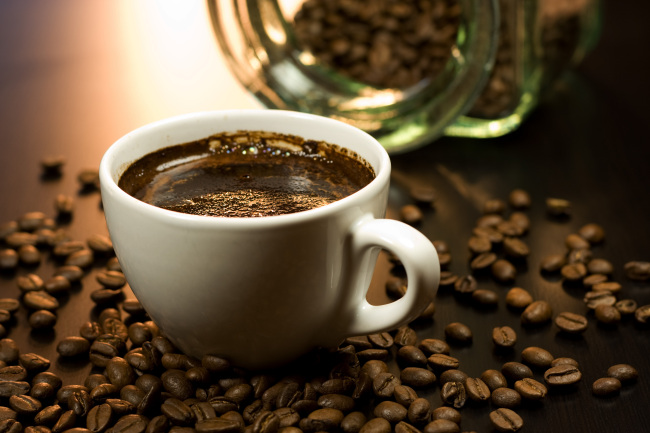What is the reason why the temperature of coffee extracted by coffee machine is too low?
What is the reason why the temperature of coffee extracted by coffee machine is too low?
1. The coffee is too light: is this coffee machine an Italian professional steam coffee machine? The coffee machine has a reasonable price and belongs to Italian coffee utensils. The above scale is set according to the concentration of Italian coffee powder, while Italian coffee powder is very strong, when cooking other low concentration coffee powder? A rich taste can be obtained by adjusting the ratio of coffee powder to water. For example, after filling up the coffee powder gently, brew the coffee to the position of scale 2.
two。 Coffee temperature is too low: after turning on the power, wait for the water from the outlet to be hot before loading the coffee powder, or open the lid to heat it, and then close the lid when the water inside is about to boil, so that the coffee tastes hot.
3. Water comes out soon after turning on the power: is this a normal situation? Because the coffee machine boiler is very sealed, the water and the gas inside will expand after heating, and the water will be pressed out. After the water is hot, the coffee can be made, or the lid of the water opening can be opened and heated, which can avoid this phenomenon.
Coffee machine extraction, also known as solvent extraction or liquid-liquid extraction, is a unit operation in which the components of the system have different solubility in the solvent to separate the mixture. That is, it is a method to transfer solute from one solvent to another by making use of the difference of solubility or partition coefficient of substances in two immiscible (or slightly soluble) solvents. Widely used in chemical, metallurgical, food and other industries, commonly used in the oil refining industry. In addition, the operation of separating the two immiscible liquids after extraction is called liquid separation. Solid-liquid extraction, also known as extraction, uses solvents to separate components from solid mixtures, such as sugar beets with water, soy oil from soybeans with alcohol to increase oil production, and water to extract active ingredients from traditional Chinese medicine to produce flow extracts called "leachate" or "leach". Although extraction is often used in chemical experiments, its operation does not change the chemical composition of the extracted substance (or chemical reaction), so the extraction operation is a physical process. Extraction is one of the methods used to purify and purify compounds in organic chemistry laboratory. By extraction, the desired substance can be extracted from a solid or liquid mixture.
The coffee extracted by the coffee machine is more light in taste and more nutritious than the coffee that has not been extracted. This kind of coffee has a special charm when it is drunk, and it can look very sweet without adding a lot of sugar. Then we must understand the principle of coffee machine extraction. In this way, delicious extracted coffee can be made. The preliminary overview of coffee machine extraction is mainly using a mixture of high-pressure steam and water to quickly pass through the coffee and extract the coffee in an instant. The coffee produced by this method has a very high temperature. At the same time, the impurities in the coffee are also very low, and the taste of the coffee will be more rich. The manual coffee machine usually has the hot water generated by the boiler, which flows through the coffee powder in the metal filter after pressurizing the hot water to nine atmospheric pressure, thus making coffee.

Important Notice :
前街咖啡 FrontStreet Coffee has moved to new addredd:
FrontStreet Coffee Address: 315,Donghua East Road,GuangZhou
Tel:020 38364473
- Prev

Burundi Coffee Bean Roast Degree Flavor Description Grind Scale Variety Taste Introduction
Burundi coffee beans roast degree flavor description grind scale variety taste introduction Burundi has the world's most diverse and successful coffee industry, and has its own characteristics. Coffee was introduced to the country by Belgian colonists in 1930 and is now grown only on small farms. Unfortunately, many of these farms are on the border with war-torn Rwanda
- Next

Introduction to the characteristic varieties of Lanshan Coffee Bean, Grinding scale treatment and Manor production area
Blue Mountain Coffee is the most superior coffee in the world, and the weather, geological structure and topography of Jamaica provide an ideal place. The ridge that runs through Jamaica extends to the eastern part of the island, with the Blue Mountains rising to more than 2100 meters. Cool weather, foggy, frequent precipitation, use this rich soil Rain Water to reconcile. Here, the mixed planting method is used to plant coffee trees to make them mix with incense in terraces.
Related
- Detailed explanation of Jadeite planting Land in Panamanian Jadeite Manor introduction to the grading system of Jadeite competitive bidding, Red bid, Green bid and Rose Summer
- Story of Coffee planting in Brenka region of Costa Rica Stonehenge Manor anaerobic heavy honey treatment of flavor mouth
- What's on the barrel of Blue Mountain Coffee beans?
- Can American coffee also pull flowers? How to use hot American style to pull out a good-looking pattern?
- Can you make a cold extract with coffee beans? What is the right proportion for cold-extracted coffee formula?
- Indonesian PWN Gold Mandrine Coffee Origin Features Flavor How to Chong? Mandolin coffee is American.
- A brief introduction to the flavor characteristics of Brazilian yellow bourbon coffee beans
- What is the effect of different water quality on the flavor of cold-extracted coffee? What kind of water is best for brewing coffee?
- Why do you think of Rose Summer whenever you mention Panamanian coffee?
- Introduction to the characteristics of authentic blue mountain coffee bean producing areas? What is the CIB Coffee Authority in Jamaica?

